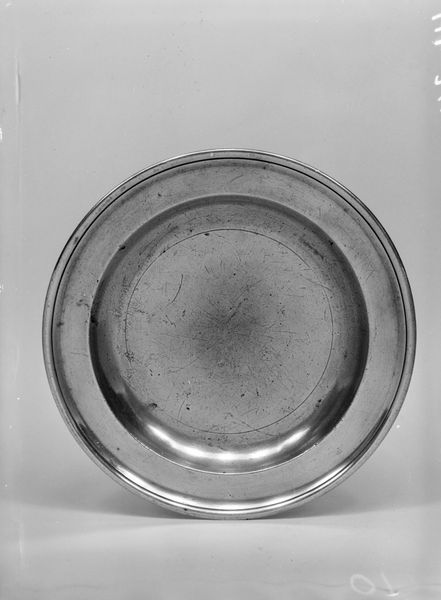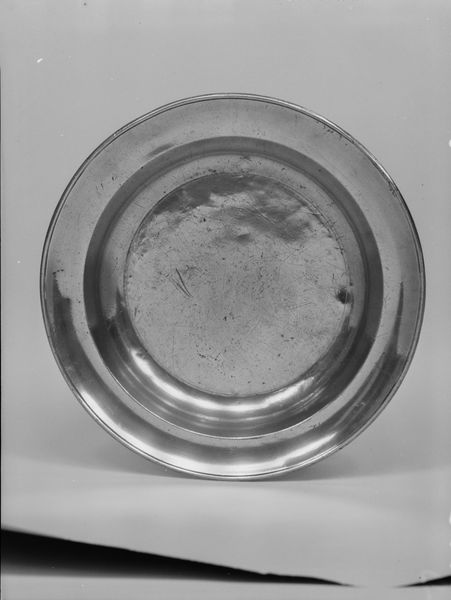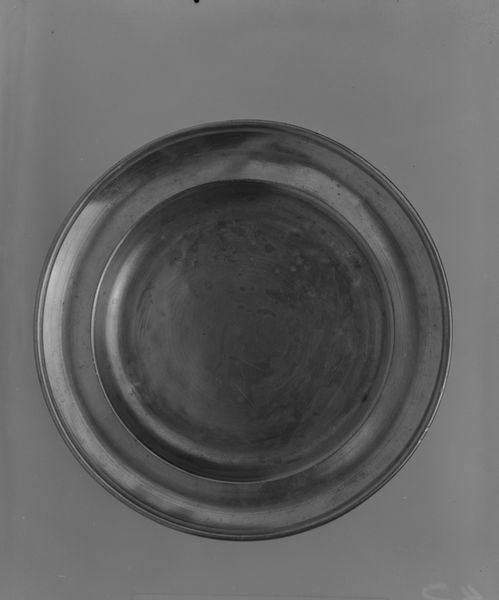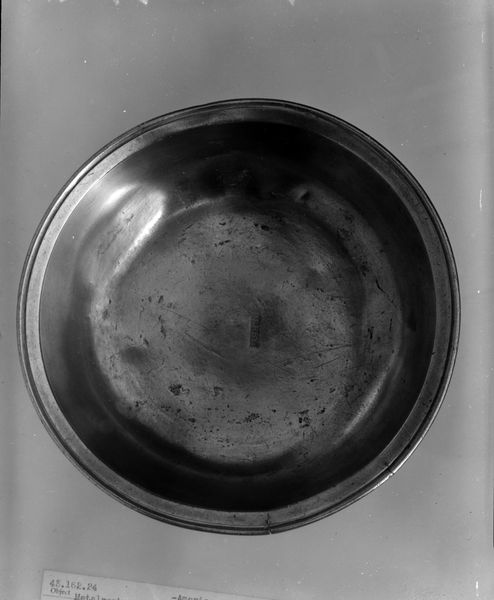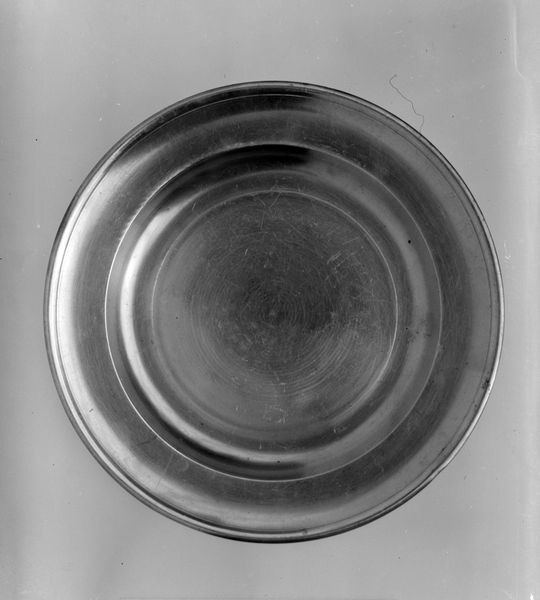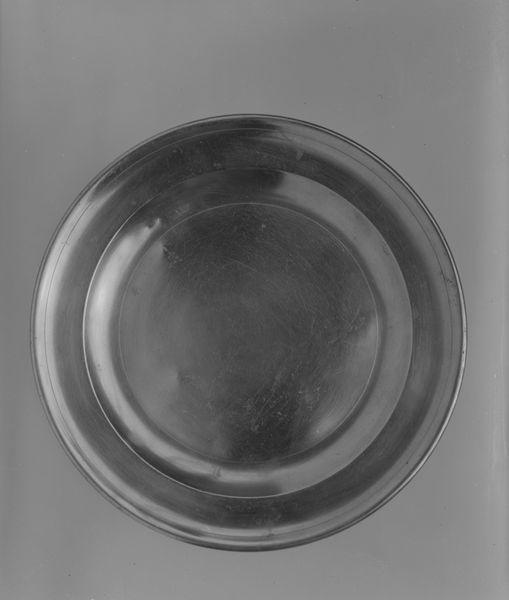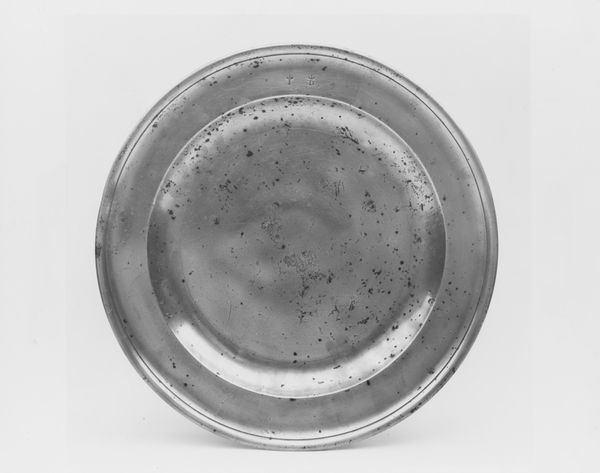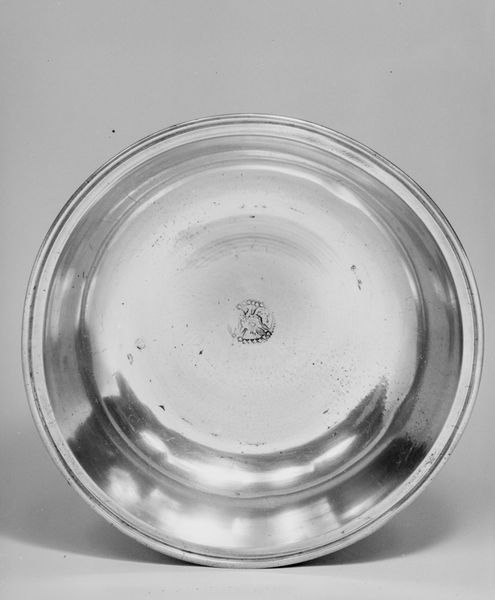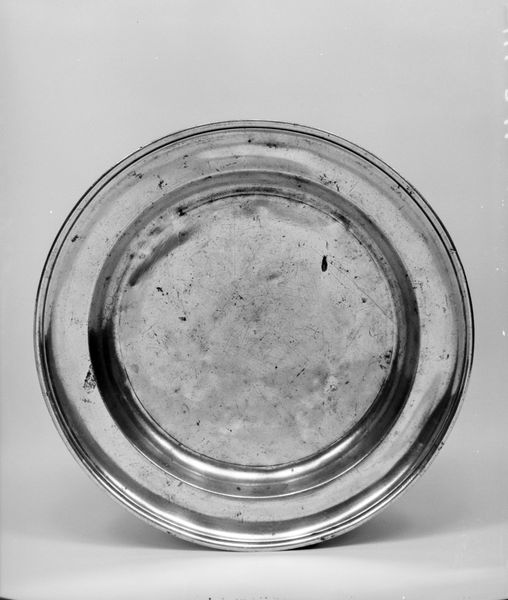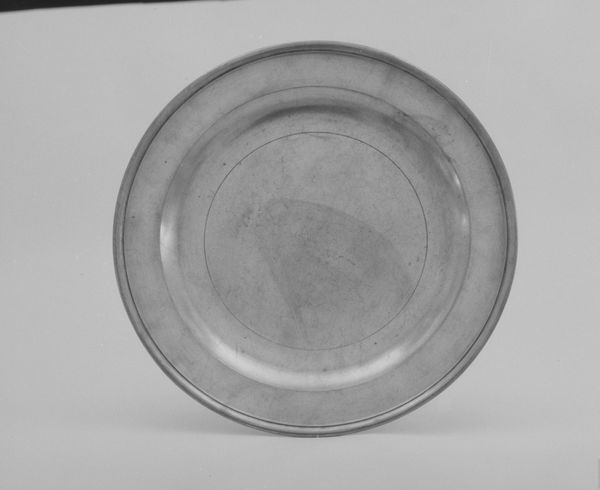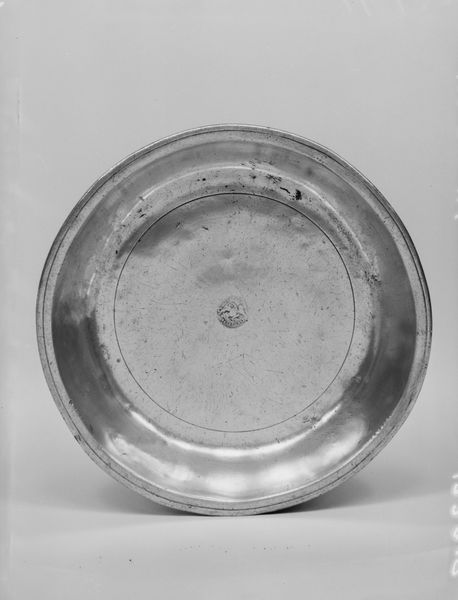
metal, sculpture
#
metal
#
sculpture
#
decorative-art
Dimensions: H. 1 5/8 in. (4.1 cm); Diam. 13 1/4 in. (33.7 cm)
Copyright: Public Domain
Editor: We're looking at a pewter dish crafted by Samuel Danforth between 1795 and 1816. It's currently housed at the Metropolitan Museum of Art. What strikes me is its quiet simplicity; almost austere, yet it speaks of everyday life. What do you make of its plainness? Curator: I find its plainness compelling. Everyday objects often carry more cultural weight than grand monuments. Think about it: for centuries, the simple dish has been a symbol of sustenance, of community, and of ritual. A plate is so central, like an icon of nourishment, around which families and societies structure daily life. How do you imagine this specific dish fitting into the home where it was used? Editor: I can picture it on a rustic table, maybe at a simple meal with a family in early America. The material even seems humble. Curator: Precisely. Pewter, unlike silver or gold, speaks to a certain level of society, a certain set of values. This object is a mirror, reflecting the lives and values of the people who used it. Consider its form too – the circle, an ancient symbol of wholeness and eternity. Does the form of the dish impact how we should interpret this ordinary thing? Editor: That makes me see beyond its surface! It’s like, through its very commonness, it connects us to the past, making me wonder what it might have held, what meals it was a part of. Curator: And those questions, that act of imagining, is exactly where the power of the object lies. It becomes a vessel, not just for food, but for memory. Editor: I’ll certainly never look at a plate the same way again. Thank you! Curator: My pleasure. It's these everyday symbols that connect us through time.
Comments
No comments
Be the first to comment and join the conversation on the ultimate creative platform.
